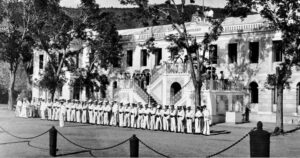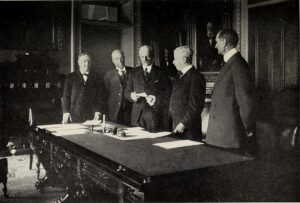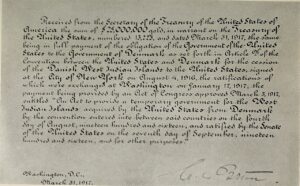
For decades, residents have looked back on the history and significance of Transfer Day during ceremonies held at the Capitol Building on St. Thomas. But with no event planned for this year, lawmakers said the holiday could be better used as a platform for community discussion on self-determination and status.
Reflecting on past events, Senate President Donna Frett-Gregory said Wednesday that now could be time for the territory to move away from observances that celebrate the idea of colonialism. The U.S. Virgin Islands could instead begin taking action on issues that have lingered as a result, such as residents’ lack of citizenship and voting rights and the development of a V.I. constitution, among others.
Transfer Day, recognized as a holiday in the Virgin Islands, commemorates the official transfer of the territory from Denmark to the United States. Danish rule extended from 1754 to 1917, when the sale to the U.S. was completed for $25 million in gold.

At the time, the islands represented a foothold in the Caribbean for the U.S. Navy and later were looked toward as a base to guard the Panama Canal. U.S. negotiations with the Danish government, along with subsequent offers, came on the heels of U.S. military conflicts.
According to Danish records, U.S. interest in the Virgin Islands dates back to as early as the mid-1860s, when Secretary of State William H. Seward began to investigate them as a possible coaling station for U.S. naval and merchant vessels.
On October 24, 1867, after nearly two years of extensive negotiation, the Danish government ratified a treaty in which Denmark would cede St. Thomas and St. John to the United States for $7.5 million. Natural disasters — a hurricane and tsunami among them — kept the treaty from being ratified.
By the end of the Spanish American War, U.S. Secretary of State John Hay expressed renewed interest in the Danish Virgin Islands to the Danish government. Beginning on January 29, 1900, and over another two years, a new treaty was negotiated, in which the Danish government would cede the islands of St. Thomas, St. John and St. Croix to the United States for $5 million. This treaty was ratified by the U.S. Congress, but not by the Danish legislature.
By 1915, fears of an impending crisis in Europe once again brought about an interest in the sale and their use as a safeguard in keeping another power from gaining bases in the Caribbean.

In March of 1916, a draft treaty was sent to the Danish Ambassador in Copenhagen offering $25 million in gold for the islands, with instructions to deliver the proposal to the Danish government. Then, on August 14, 1916, a revised treaty was signed, followed by approval by the U.S. Senate on September 7, 1916, and by December 21, 1916, approval by the Danish. On January 17, 1917, the treaty ratifications were exchanged and the treaty was finalized.
The official transfer of the Danish West Indies to the United States occurred at 4:00 p.m. on March 31, 1917, with a formal ceremony at the U.S. Capitol.


